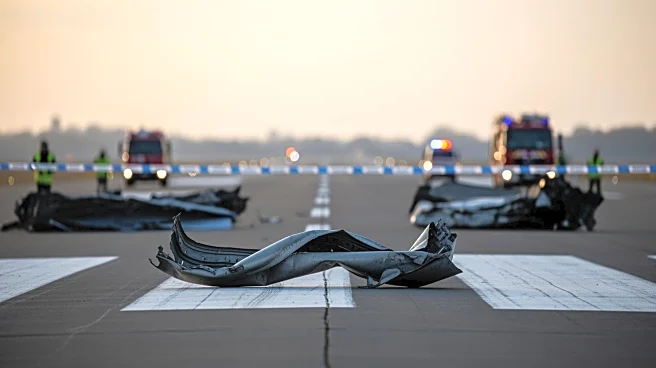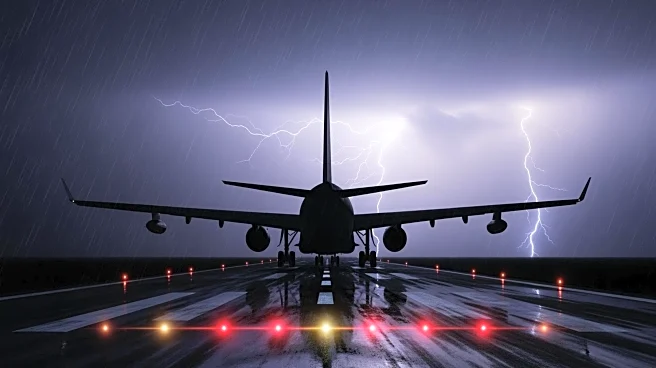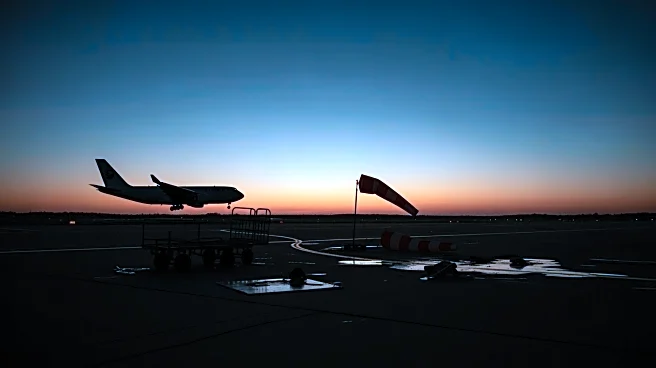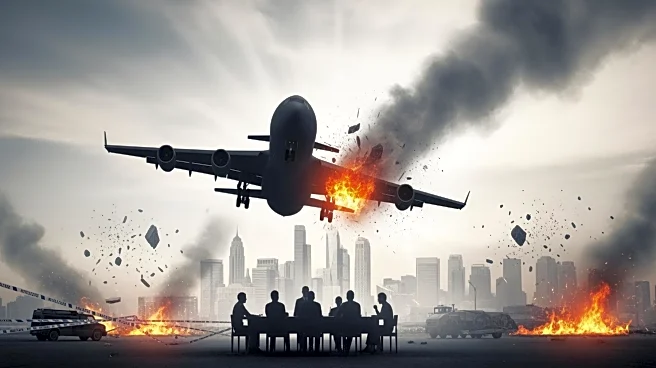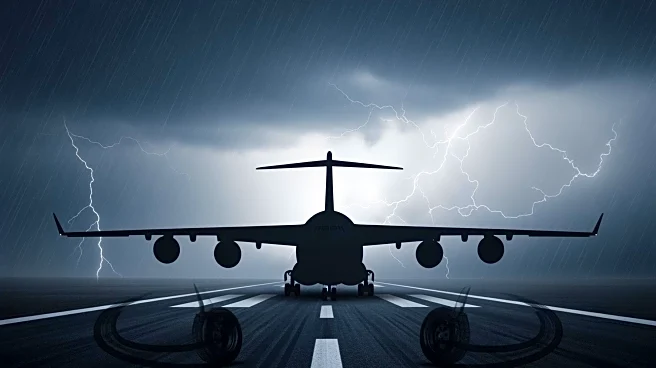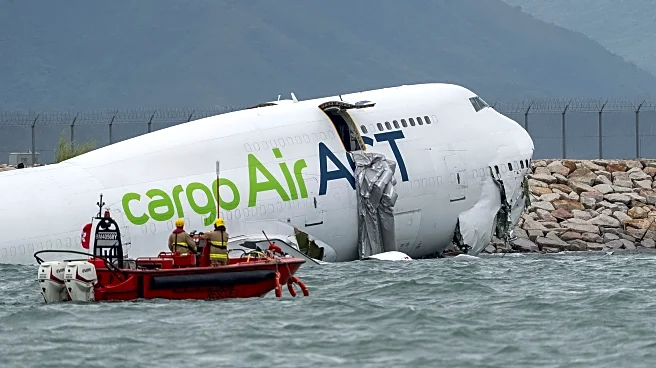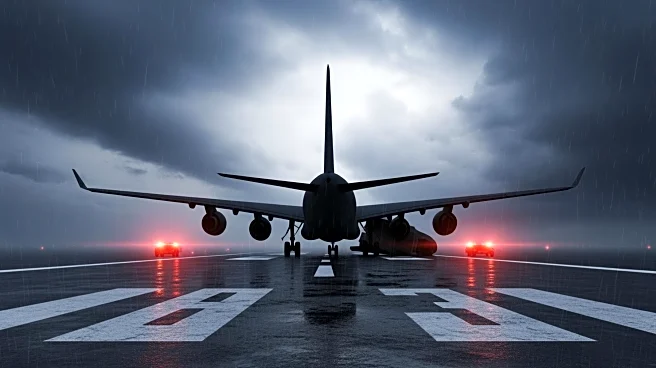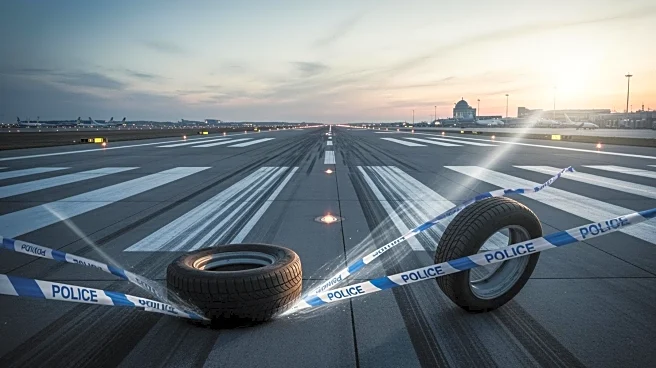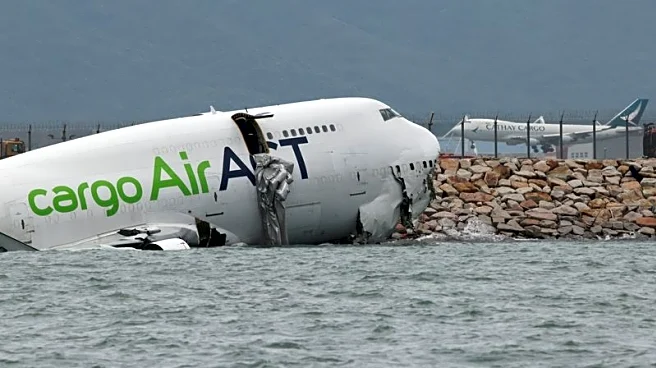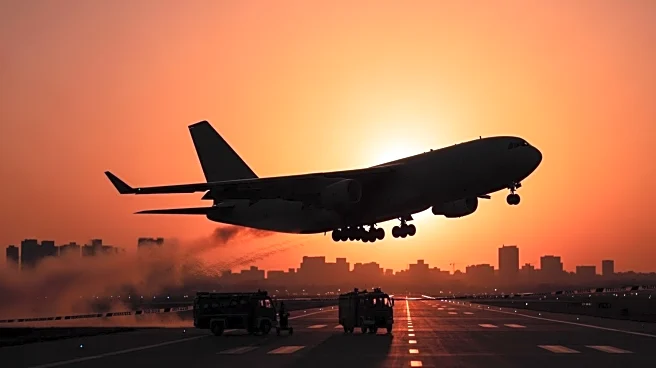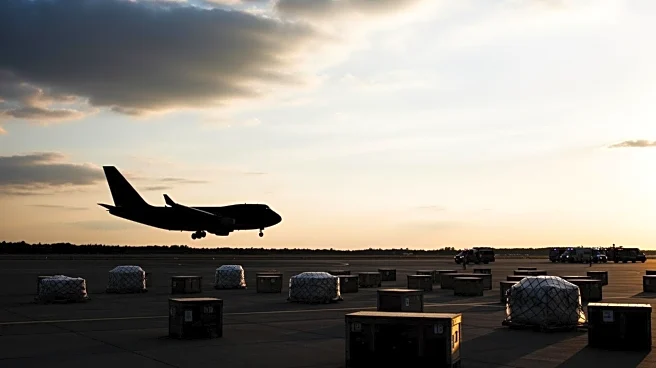What's Happening?
A cargo plane operated by Turkish freight carrier ACT Airlines, on behalf of Emirates, skidded off the runway at Hong Kong International Airport, resulting in the deaths of two airport security staff.
The Boeing 747, arriving from Dubai, collided with a security patrol vehicle, pushing it into the sea. The incident occurred early Monday morning, marking the deadliest airport accident in Hong Kong in over 25 years. All four crew members aboard the aircraft survived, but the security staff were found unresponsive in the water, with one confirmed dead at the scene and the other later at the hospital. The cause of the crash is under investigation, with factors such as weather, runway conditions, and aircraft performance being considered.
Why It's Important?
The crash highlights significant safety concerns at one of the world's busiest cargo airports. The incident underscores the importance of rigorous safety protocols and effective communication between air traffic control and pilots. The fatalities of airport staff raise questions about ground safety measures and the coordination of runway operations. The investigation's findings could lead to changes in airport safety regulations and operational procedures, impacting airlines and airport authorities globally. The event also stresses the need for improved emergency response strategies to prevent future tragedies.
What's Next?
Authorities are conducting a thorough investigation to determine the exact cause of the crash. The findings may prompt revisions in airport safety protocols and operational guidelines. Stakeholders, including airport authorities, airlines, and regulatory bodies, are expected to review and possibly enhance safety measures to prevent similar incidents. The investigation's outcome could influence international aviation safety standards, affecting airports and airlines worldwide.
Beyond the Headlines
The incident may lead to discussions on the ethical responsibilities of airlines and airport operators in ensuring the safety of both passengers and ground staff. It could also trigger debates on the adequacy of current safety measures and the need for technological advancements in runway safety systems. Long-term implications might include increased investment in safety infrastructure and training programs for airport personnel.
